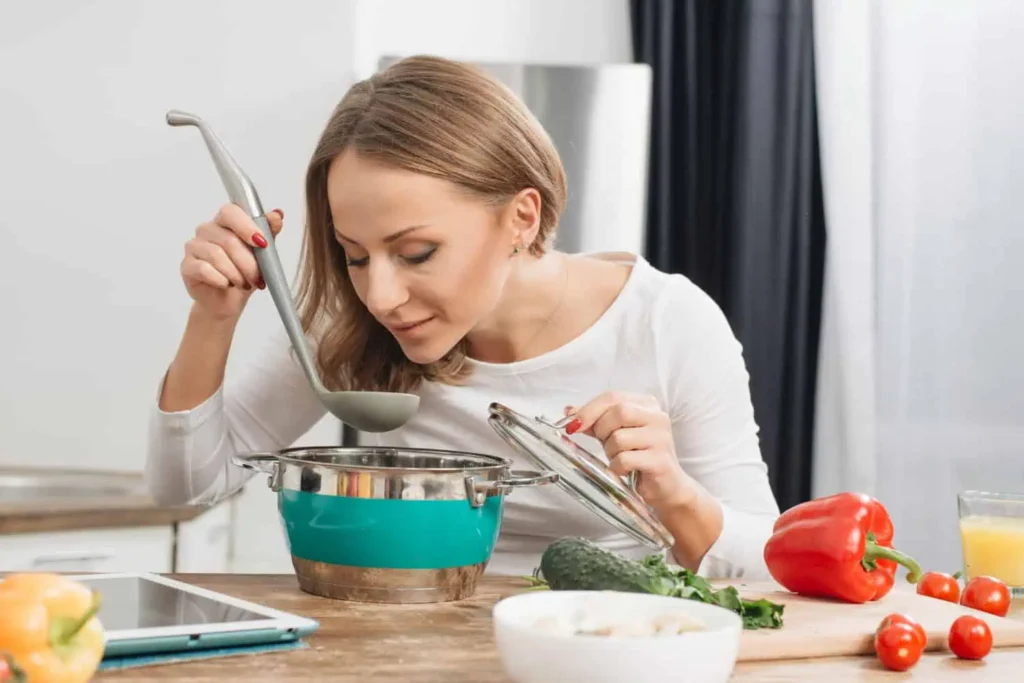Have you ever wondered what is the secret to making good soup? Soup is one of the most comforting and versatile dishes in the culinary world. Whether it’s a hearty chicken noodle soup, a creamy tomato bisque, or a rich beef stew, the secret to making good soup lies in mastering a few essential techniques, using quality ingredients, and understanding how to layer flavors. Soup-making is both an art and a science, and with the right approach, you can create a dish that is not only delicious but also deeply satisfying.
Soup has been a staple of human diets for centuries, with its origins dating back to ancient times when boiling food in water was one of the simplest ways to cook. Today, soup remains a beloved dish across cultures, with countless variations and styles. From the spicy tom yum of Thailand to the hearty minestrone of Italy, soup is a universal comfort food that can be adapted to suit any palate or occasion.
In this comprehensive guide, we’ll explore every aspect of soup-making, from the basics of building a flavorful base to advanced techniques that will elevate your soups to restaurant-quality. We’ll also answer common questions, troubleshoot common mistakes, and provide tips for storing and serving your soup. By the end of this article, you’ll have all the tools you need to create soups that are not only delicious but also memorable.
The Foundation of Every Great Soup
Understanding the Basics of Soup Making
The secret to making good soup starts with understanding the basics. Soup is essentially a combination of liquid, aromatics, and ingredients like vegetables, meat, or grains. However, the magic happens when these elements are combined in the right way. The key is to build layers of flavor, starting with a strong foundation and adding complexity as you go.
Soup can be divided into several categories, including:
- Clear Soups: These include broths and consommés, which are light and transparent. They rely on the clarity and depth of the liquid for flavor.
- Thick Soups: Examples include chowders, bisques, and pureed soups. These are rich and creamy, often thickened with ingredients like cream, roux, or pureed vegetables.
- Hearty Soups: These include stews, chili, and soups with chunky ingredients like meat, beans, and vegetables. They are filling and often served as a main course.
Each type of soup has its own unique characteristics, but the principles of good soup-making apply to all of them.
Building Your Flavor Base
The cornerstone of any great soup is the flavor base. In French cuisine, this is known as a mirepoix, which consists of onions, carrots, and celery. This trio of vegetables is sautéed in fat (like butter or oil) to release their natural sweetness and create a depth of flavor that forms the backbone of your soup.
Tips for Building a Flavor Base:
- Mirepoix Ratio: Use a 2:1:1 ratio of onions to carrots and celery.
- Sautéing Tips: Cook the vegetables over medium heat until softened but not browned. This ensures a sweet, aromatic base without bitterness.
- Regional Variations: Depending on the cuisine, you can adapt the flavor base. For example:
- Italian soffritto includes garlic and parsley.
- Cajun trinity swaps carrots for green bell peppers.
- Spanish sofrito often includes tomatoes and paprika.
The flavor base is where the magic begins. Taking the time to properly sauté your aromatics will ensure that your soup has a rich, complex flavor from the very first step.
Quality Stock Makes the Difference
A high-quality stock is one of the most important elements in making good soup. Whether you’re using chicken, beef, vegetable, or seafood stock, the liquid you choose will determine the overall flavor of your soup. While store-bought stock can work in a pinch, homemade stock is always superior.
Why Homemade Stock is Better:
- Control Over Ingredients: You can control the salt content and avoid preservatives.
- Deeper Flavor: Homemade stock has a richer, more complex flavor because it’s made with fresh ingredients and simmered for hours.
- Customizable: You can tailor the stock to suit the type of soup you’re making. For example, add ginger and lemongrass for an Asian-inspired soup or roasted bones for a hearty stew.
Tips for Making Homemade Stock:
- Start with Cold Water: Always begin with cold water to extract maximum flavor from the ingredients.
- Simmer, Don’t Boil: Boiling can make the stock cloudy and emulsify fats. A gentle simmer is ideal.
- Skim Impurities: Use a ladle to skim off foam and impurities that rise to the surface.
- Add Aromatics: Include garlic, bay leaves, peppercorns, and fresh herbs for added depth.
- Roast Bones for Richness: For meat-based stocks, roasting the bones beforehand enhances the flavor.

Essential Techniques for Perfect Soup
The Art of Layering Flavors
One of the biggest secrets to making good soup is layering flavors. This means adding ingredients in stages to build complexity and ensure that each component contributes to the final dish.
How to Layer Flavors:
- Start with Aromatics: Begin by sautéing onions, garlic, and other aromatics to release their flavors.
- Add Herbs and Spices: Introduce dried herbs and spices early in the cooking process to allow their flavors to bloom.
- Season Gradually: Add salt in small amounts throughout the cooking process, tasting as you go.
- Finish with Acid: A splash of vinegar, lemon juice, or wine at the end of cooking brightens the flavors and balances richness.
Layering flavors is what separates a bland soup from a truly memorable one. By taking the time to build complexity, you’ll create a soup that is rich, balanced, and satisfying.
Temperature Control and Timing
Temperature and timing are critical when making good soup. Overcooking or undercooking ingredients can ruin the texture and flavor.
Tips for Temperature Control:
- Simmer, Don’t Boil: A gentle simmer allows flavors to meld without breaking down delicate ingredients.
- Add Ingredients in Stages: For example, add root vegetables early, but save quick-cooking ingredients like greens or pasta for the end.
- Allow Time for Flavors to Develop: Many soups taste better after resting for a few hours or overnight, as the flavors have time to meld.
Timing is everything in soup-making. Knowing when to add each ingredient ensures that everything is cooked to perfection and retains its flavor and texture.
Ingredient Selection and Preparation
Choosing Quality Ingredients
The quality of your ingredients directly impacts the final result. Fresh, seasonal produce and high-quality proteins are essential for making good soup.
Tips for Choosing Ingredients:
- Vegetables: Use fresh, in-season vegetables for the best flavor. Frozen vegetables can work in a pinch but may lack texture.
- Meat: Choose cuts of meat that suit the soup. For example:
- Use chicken thighs for chicken soup (they’re more flavorful than breasts).
- Opt for marbled beef in stews for tenderness.
- Herbs and Spices: Fresh herbs like parsley, thyme, and cilantro add brightness, while dried spices like cumin, paprika, and turmeric add depth.
Proper Preparation Techniques
How you prepare your ingredients matters just as much as the ingredients themselves.
Preparation Tips:
- Uniform Cutting: Cut vegetables and proteins into uniform sizes to ensure even cooking.
- Blanching: For soups with leafy greens, blanching them first can help retain their vibrant color.
- Pre-Cooking Proteins: Sear or brown meat before adding it to the soup to enhance its flavor.
Seasoning Secrets
The Importance of Proper Seasoning
Seasoning is one of the most overlooked aspects of making good soup. A well-seasoned soup is balanced, flavorful, and satisfying.
Tips for Seasoning:
- Salt in Stages: Add salt gradually throughout the cooking process rather than all at once.
- Umami Boosters: Ingredients like soy sauce, miso paste, Parmesan rind, or mushrooms can add a savory depth.
- Balancing Flavors: Use sugar, acid, or fat to balance overly salty, sour, or bitter flavors.
Texture and Consistency
Achieving the Perfect Texture
The texture of your soup can make or break the dish. Whether you prefer a chunky stew or a silky bisque, the key is to match the texture to the type of soup.
Tips for Texture:
- Clear Soups: Strain the broth for a clean, transparent appearance.
- Creamy Soups: Use a blender or immersion blender to achieve a smooth consistency.
- Chunky Soups: Cut ingredients into bite-sized pieces for a satisfying texture.

Common Mistakes and How to Avoid Them
Even experienced cooks can make mistakes when making good soup. Here are some common pitfalls and how to avoid them:
- Overcooking Vegetables: Add vegetables in stages to prevent them from becoming mushy.
- Under-Seasoning: Taste and adjust seasoning throughout the cooking process.
- Adding Pasta Too Early: Cook pasta separately and add it just before serving to avoid sogginess.
- Skipping the Sauté Step: Always sauté aromatics to build flavor before adding liquid.
- Boiling Instead of Simmering: Boiling can break down ingredients and create a cloudy broth.
Advanced Techniques for Superior Soups
Garnishing Like a Pro
Garnishes can take your soup to the next level, adding flavor, texture, and visual appeal.
Garnish Ideas:
- Fresh Herbs: Sprinkle chopped parsley, cilantro, or chives on top.
- Croutons: Add crunch with homemade croutons or toasted bread.
- Cream Swirls: Drizzle cream or yogurt for a decorative touch.
- Infused Oils: Finish with a drizzle of flavored oil, like chili or basil oil.
- Crispy Toppings: Use fried onions, bacon bits, or crispy shallots for texture.
Storage and Serving Tips
Proper Storage Techniques
Storing soup correctly ensures it stays fresh and flavorful.
Storage Tips:
- Cool Quickly: Allow soup to cool to room temperature before refrigerating.
- Use Airtight Containers: Store soup in airtight containers to prevent contamination.
- Freeze in Portions: Freeze soup in individual portions for easy reheating.
- Reheat Gently: Reheat soup over low heat to preserve its texture and flavor.
FAQs About Making Good Soup
Q: How long should I simmer my soup?
A: Most soups benefit from at least 30-45 minutes of simmering, though some may require several hours depending on the ingredients. The key is to allow enough time for flavors to develop while maintaining the integrity of your ingredients.
Q: Why is my soup bland?
A: Bland soup usually results from insufficient seasoning, lack of aromatics, or not allowing enough time for flavors to develop. Try adding more salt gradually, incorporating umami-rich ingredients, or using fresh herbs and acid to brighten flavors.
The Final Secret to Making Good Soup
The ultimate secret to making good soup lies in patience, attention to detail, and a willingness to experiment. By mastering the techniques outlined in this guide, you’ll be able to create soups that are not only delicious but also deeply satisfying. Remember, great soup is both a science and an art. Trust your instincts, taste as you go, and don’t be afraid to get creative. With practice, you’ll develop your own signature soups that will impress family and friends alike. Happy cooking!

